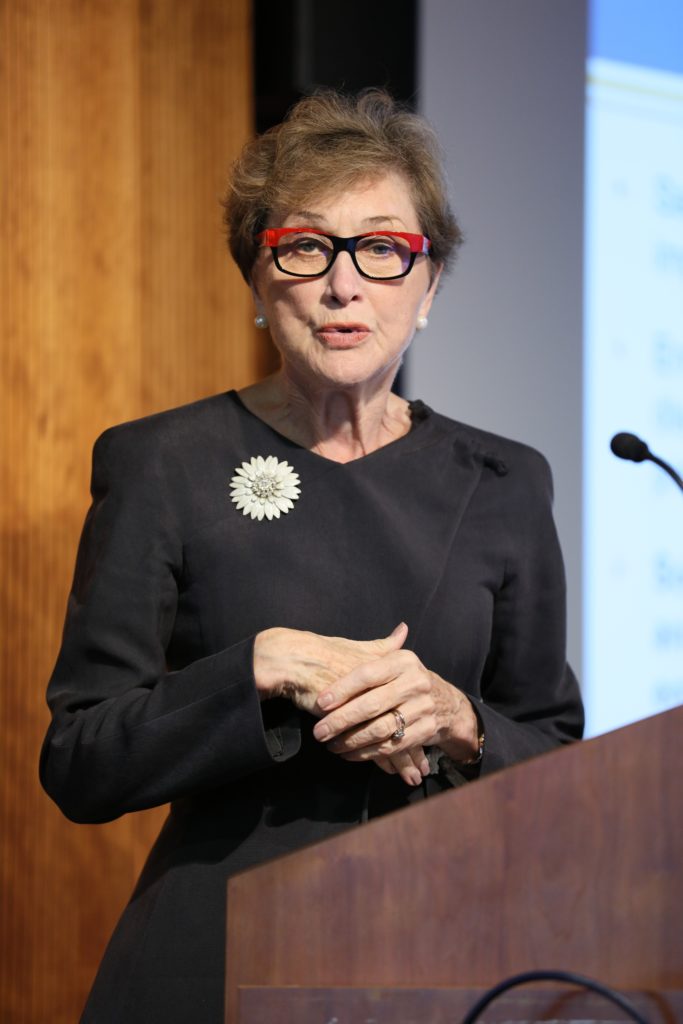 A study released this week by the All-Party Parliamentary Group on Arts, Health and Wellbeing raises interesting questions around workplace wellbeing through the use of artistic interventions. James Evison assesses.
A study released this week by the All-Party Parliamentary Group on Arts, Health and Wellbeing raises interesting questions around workplace wellbeing through the use of artistic interventions. James Evison assesses.
Getting workers to start a drumming group or read a poem is probably not at the top of your in-tray. But if your focus is on wellbeing in the workforce, maybe it should.
At present, NICE guidelines do not feature the arts in relation to workplace health, but in this emerging field of wellbeing of staff, the APPG’s groundbreaking study, Creative Health: The Arts for Health and Wellbeing, reveals much that is useful and insighful to safety and health practitioners.
Indeed, the framework is already in place. A cross-go vernmental initiative, known as Health, Work and Wellbeing, has been set-up to improve and protect the health of working-age people. But this does not currently incorporate the arts into its agenda.
vernmental initiative, known as Health, Work and Wellbeing, has been set-up to improve and protect the health of working-age people. But this does not currently incorporate the arts into its agenda.
Dame Carol Black, who advised the government for a decade on work and health said at last year’s British Safety Council annual conference that mental health and wellbeing in the workplace is ‘not all about fruit bowls and cycle to work schemes’ and required employers to ‘looking deeper into the work environment, the leadership, mental health, fairness and job design.’
She said: “It’s about modifiable risks in the workplace and worker participation, involving the lowest level of workers – the refuse collectors in the councils and the porters in the hospitals.
“These people need to feel engaged.”
Non-clinical interventions
The need for evidence relating to wellbeing is also apparent. The new APPG study follows an article by clinical psychologist Jay Watts criticising the lack of clinical evidence for the effectiveness of Mental Health First Aid (MHFA) – one of the flagship schemes to provide assistance to those suffering from mental health issues in the workplace.
Many elements of the opinion piece were swiftly rebutted by MHFA CEO Poppy Jaman. But the core issue around ‘evidence’ is worth assessing in detail. Jarman claims many workers, who may be assessed by MHFA, do not need clinical attention. It is the issues around this specific group which are crucial to understanding the potential success of any arts intervention in worker-related wellbeing.
Music and singing
Several studies referenced by MPs in the APPG report illustrate the success of artistic interventions. Indeed, it highlights there are already trailblazing schemes which can be directly applied into a workplace setting with a positive impact on wellbeing.
Between 2013 and 2015, a study led by the Centre for Performance Science at the Royal College of Music – as part of the Creative Practice as Mutual Recovery – saw adults experiencing mild to moderate mental health issues take part in weekly 90-minute group drumming sessions.
During single sessions, stress and tiredness significantly decreased and happiness, relaxation and energy levels increased. Over the course of the study, group drumming was show to lead to reductions in cortisol and an enhancement in immune responses, which was combined with a reduction in inflammatory activity over a six week span and the activation of an anti-inflammatory response over 10 weeks.
Singing has also been shown to be an effective tool, increasing mental stimulus, psychological wellbeing, and producing moderate reductions in fatigue, as well as studies showing it reduces heart and respiratory rate.
Knitting and reading
 Additionally, Stitchlinks has been pioneering therapeutic knitting in clinical and community environments since 2006. A survey of participants – more than 3,500 – reported higher cognitive functioning, and feeling calmer and happier following the programme. Evidence from elsewhere has also suggested knitting helps mitigate the pain associated with long-term physical health conditions.
Additionally, Stitchlinks has been pioneering therapeutic knitting in clinical and community environments since 2006. A survey of participants – more than 3,500 – reported higher cognitive functioning, and feeling calmer and happier following the programme. Evidence from elsewhere has also suggested knitting helps mitigate the pain associated with long-term physical health conditions.
In the north west of England, as well as across other regions, The Reader scheme has proven success through engagement with workplaces, prisons, care homes, schools and local communities through reading. The programme sees group leaders facilities the reading aloud of ‘serious’ literature – poems, short stories or novels – and group discussion of the pieces. The aim is for participants to recognise in literature experiences in their own lives, and, in sharing and discussing these with others, gain insight and mutual support for them.
Researchers at the Centre for Research into Reading, Literature and Society at the University of Liverpool (CRILS) – the principal academic partner of The Reader programme – found the act of reading aloud, in combination with the literature being read, ‘creates a non-judgemental, compassionate space in which moments of reflection and realisation occur’.
CRILS has also already established from the study a positive value to those suffering from depression, as well as benefits including improved mental agility, emotional flexibility and enhanced sense of purpose in life.
Current wellbeing agendas
The APPG reports that numerous public sector bodies and companies have health and wellbeing agendas and programmes – but very few focus specifically on the arts element.
For example, the Civil Service Health and Wellbeing agenda focuses on mental health and musculoskeletal complaints but does not include arts participation. A £450m NHS initiative to improve wellbeing of staff in the health sector – run across three pilot sites – did not include any element of the arts. The TUC and other unions also have large-scale and detailed wellbeing programmes for workers, but, again, nothing specific on using the arts to change behaviours or improve mental health and wellbeing.
There are a few examples where artistic invention does occur, such as wellbeing representatives within separate government departments undertaking wellbeing trips, including trips to the theatre, cinema, and other cultural events. But, for the most part, the examples are disjointed and there is yet to be a consistent central message from government or major public sector bodies – as well as large private sector organisations – on the relevance and usage of the arts in relation to the wellbeing of workers.
Artist Grayson Perry, a contributor to the study, said: “Making and consuming art lifts our spirits and keeps us sane.
“Art, like science and religion, helps us make meaning from our lives, and to make meaning is to make us feel better.”
The evidence is available, and it would seem that the journey to an arts-focused wellbeing agenda has begun.
Read the full report here.
What makes us susceptible to burnout?
In this episode of the Safety & Health Podcast, ‘Burnout, stress and being human’, Heather Beach is joined by Stacy Thomson to discuss burnout, perfectionism and how to deal with burnout as an individual, as management and as an organisation.
We provide an insight on how to tackle burnout and why mental health is such a taboo subject, particularly in the workplace.





Of course, not exactly counter intuitive if, work/life balance supports down-time activities and the, development of “absorbing hobbies” outside of thinking about work 24/7. However, without optimising display screen equipment interface (screen ergonomics) the majority of user operators will be suffering the debilitating symptoms of screen fatigue or computer vision syndrome, founded in over exposure to sub-optimal screen setting so, will be unlikely to persevere with reading for pleasure in any leisure time. It may have been acceptable custom and practice, over the years, for DSE operators to loose 20% performance and productivity over the working day manifesting in presenteeism… Read more »